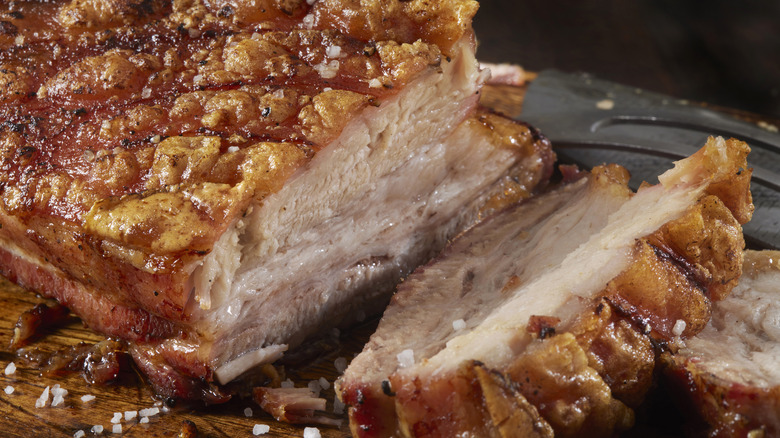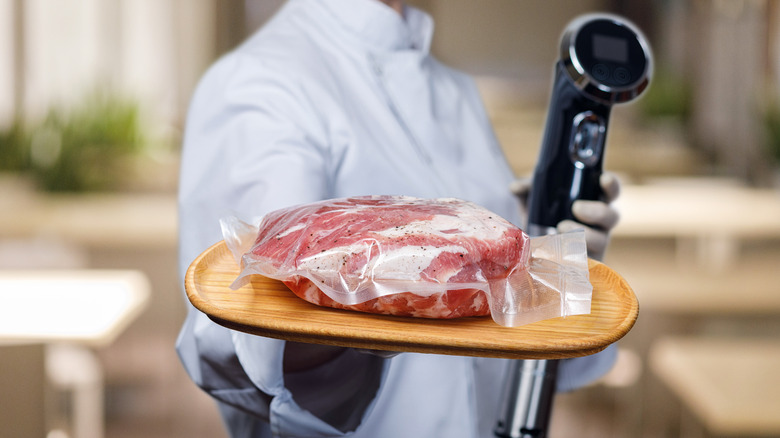The Chef-Approved Way To Cook Pork Belly That's Crispy On The Outside And Juicy On The Inside
Pork belly is usually slow-cooked in an oven at a low temperature to fork-tender lusciousness, and then the temperature is increased to crisp up its skin to a satisfying crunch. The method works, but there is some chance of drying out the pork belly, and getting its skin to the much-desired crackling snap isn't guaranteed. Time to ask an expert for tips: Chef Rick Parente and his wife co-own Clock Tower Grill in Brewster, New York State, and also sustainably raise heritage Berkshire hogs, which often appear on the menu. Chef Parente shared with us his foolproof way for cooking pork belly.
Parente's preparation has a three-step method. He explained, "For skin-on pork belly, I like to cure it, cook it sous vide (vacuum-sealed and cooked at low temperature in a water bath), and then fry it to get a crispy exterior and a moist interior." He begins by curing the pork belly for ten days with a sweet-savory rub of salt, sugar, maple syrup, and pepper, which improves both the pork's texture and flavor. But to ensure that the pork belly has juicy meat, he says, "cooking it sous vide at a consistent 165 degrees Fahrenheit overnight (or for 12 hours) will get it to the perfect doneness and keep it moist." Parente then cuts up the cooked pork belly into cubes or steaks and fries them until the skin is golden brown and crispy.
Sous vide pork belly for a succulent meal
Chef Rick Parente's flavorsome rub for pork belly works by drawing out moisture from the skin, which helps dry it out to form a crispy crust when it's seared. Also, Parente's seasonings are similar to those used in turning pork belly into bacon, and those lovely sweet-savory flavors concentrate in the pork during the ten-day curing time. Admittedly, that's a long time for pork belly to take up residence in your fridge, so you could cure it in a resealable plastic bag for slightly less time; seven days rather than ten.
Sous vide cooking has been the darling of restaurant chefs since the 1990s. The method of vacuum-sealing meat and then putting it into a water bath at a controlled temperature is ideal for a time-pressed restaurant kitchen. A chef can sous vide steaks to a perfect medium-rare hours ahead of service and then only have to give the meat a sear to crisp up that skin just before sending it out to a guest. Parente's recommendation to sous vide the pork belly helps home cooks as well and will ensure a perfectly cooked pork belly with nearly hands-off effort. Yes, it takes time, but the actual prep involved is minimal.
The Berkshire hog pork that the Parentes use won't always be available in stores, so look for fresh pork belly that has 50 percent firm, pink meat to 50 percent cream-colored fat. By using chef Parente's method, you'll be sure to make a memorable, succulent yet crisp-skinned pork belly.

